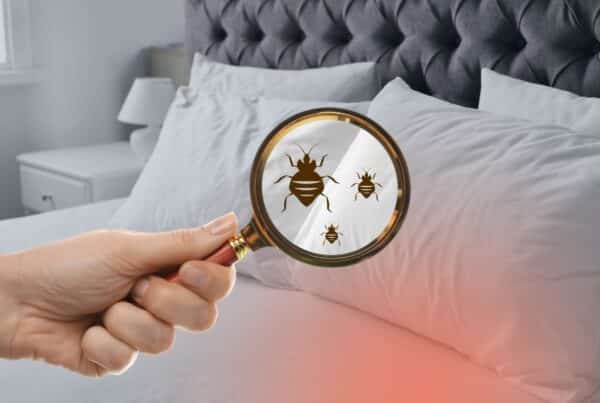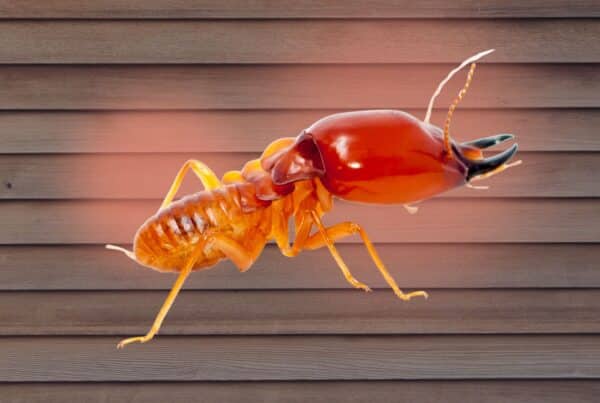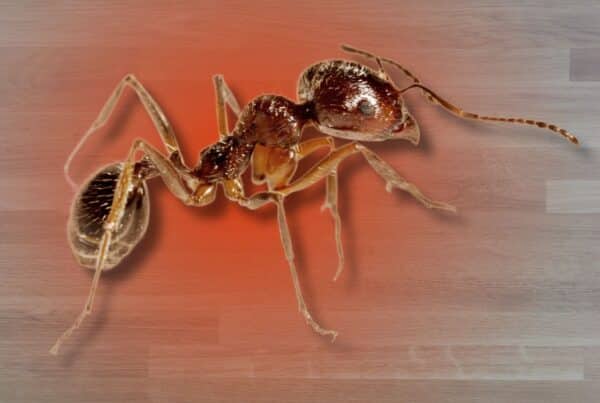This guide from Grand Slam Pest Control explains the most effective ways to prevent termites, what attracts them, and when to call for help.
Texas homeowners know that few pests cause as much stress or expense as termites. These silent invaders feed on wood and structural materials year-round. By the time visible damage appears, a colony may have been active for months.
The good news is that you can prevent most infestations of termites with simple habits and consistent inspections. Whether you live in Conroe, Spring, or The Woodlands, understanding local termite behavior helps you stay ahead of costly repairs.
Why Termite Prevention Matters in Texas
Texas ranks among the top termite-infested states in the country. Warm, humid weather allows colonies to stay active nearly all year.
The U.S. Department of Agriculture estimates termites cause more than $5 billion in damage annually nationwide, and most of that is not covered by homeowners insurance.
Locally, subterranean termites are the biggest concern. They live in soil, build mud tubes, and travel through cracks in foundations to reach food sources inside the home.
Once established, they can tunnel through framing, flooring, and even furniture before being noticed.
Early prevention is far less expensive than treatment. A few small changes today can prevent thousands in future repair costs.

Know Your Enemy: The Types of Termites We Have
Texas hosts several termite species, but three cause the most trouble for homeowners.
Subterranean Termites
These are the most destructive. They live underground in massive colonies that can include hundreds of thousands of workers. Mud tubes along foundations or walls are an early warning sign.
Formosan Termites
Often called “super termites,” these aggressive pests build large colonies that spread quickly through wood and soil. They thrive in humid parts of southeast Texas and coastal regions.
Drywood Termites
Unlike subterranean species, drywood termites live entirely within the wood they eat. They often infest furniture, attics, or wood trim and do not require soil contact, which makes detection harder.
All species thrive in warmth, moisture, and darkness. The more you limit those conditions, the less likely termites are to settle in.
Step 1: Eliminate Moisture Around the Foundation
Moisture is the number one attractant for termites. Standing water or constant dampness provides perfect breeding conditions.
Pro tips:
- Make sure gutters and downspouts direct water at least six feet away from the foundation.
- Repair leaky faucets, irrigation lines, or outdoor spigots right away.
- Confirm that your yard drains properly after heavy rain.
- Use a dehumidifier in crawl spaces if humidity stays above 60%.
After Texas spring storms, water often collects near foundations and softens the soil. Keeping the area dry and well-drained removes the environment termites need to survive.
Step 2: Seal Cracks and Entry Points
Termites can fit through openings as small as one-sixteenth of an inch. Their most common routes inside are foundation cracks, utility openings, and unsealed gaps around pipes.
Inspect your home for:
- Cracks in slabs or brick mortar.
- Gaps around plumbing or electrical lines.
- Openings near windows or door frames close to soil level.
Seal these areas with durable caulk or concrete filler. Even small repairs close off the pathways that subterranean termites use to reach wood framing.
Step 3: Store Wood and Mulch Properly
Stacking wood or mulch too close to your home gives termites an easy bridge indoors.
Best practices:
- Keep firewood at least 20 feet away from the house and store it off the ground.
- Use only a thin, two-inch layer of mulch around plants and keep it four to six inches away from the foundation.
- Remove stumps, fallen branches, and old lumber from your yard.
Many infestations in the Houston and Conroe areas start in mulch or landscaping timbers that stay damp throughout the year.
Step 4: Reduce Wood-to-Soil Contact
Any direct connection between wood and soil creates a perfect termite entry point.
Find and correct these common risks:
- Porch steps or deck posts resting on bare soil.
- Fence panels without concrete or metal bases.
- Door and window frames that sit below grade.
Install barriers or supports that lift wood off the ground. If your home has a crawl space, make sure vents remain unobstructed to keep air circulating and moisture low.
Step 5: Watch for Early Warning Signs
Catching termite activity early makes a huge difference in controlling damage.
Common signs to catch:
- Thin, mud-like tubes along foundation walls or support beams.
- Discarded wings near doors or windows after a warm, humid day.
- Hollow-sounding wood or sagging floors.
- Bubbling or blistered paint that looks like water damage.
These clues often appear in late spring or early summer when colonies release swarmers to form new nests. If you spot them, schedule an inspection immediately.
Step 6: Schedule Professional Termite Inspections
Even with careful maintenance, some infestations remain invisible to the untrained eye. A professional inspection ensures no warning signs go unnoticed.
What inspectors check:
- Interior and exterior walls for cracks or damage.
- The attic, crawl space, and foundation perimeter.
- Areas of direct wood-to-soil contact.
- Drainage patterns and humidity levels.
Grand Slam Pest Control recommends annual or semiannual termite inspections for homes in humid Texas regions.
Our trained technicians use advanced tools to detect hidden tunnels, moisture pockets, and damaged wood long before major repairs are needed.
Step 7: Get Preventive Treatments
If you live in an area known for heavy termite pressure, preventive treatments provide an extra layer of protection.
1) Liquid Barrier Treatments: A protective zone is applied around the foundation. Termites crossing the barrier are eliminated before they reach the home.
2) Bait Systems: In-ground stations lure foraging termites and destroy colonies from within. They are an environmentally friendly solution that targets the source.
3) Wood Treatments: Borate-based solutions applied to beams, crawl spaces, and framing create a long-term shield against infestations.
These methods work best when combined with annual inspections and strong moisture control practices.

Are Termites a Year-Round Threat in Texas?
While many pests slow down during winter, termites stay active underground whenever soil temperatures remain above 60°F. That means in The Woodlands and across southeast Texas, activity continues nearly year-round.
According to the Texas A&M Forest Service, subterranean termites can forage up to 150 feet from their colony in search of food. Homes without visible mud tubes may still be within reach of a nearby colony.
Late winter and early spring are prime times to check for signs, since swarming often begins as soon as temperatures rise.
Why Solely DIY Prevention Won’t Cut It
Routine upkeep goes a long way, but DIY methods rarely stop termites completely. Colonies live deep underground and can extend under driveways, patios, or neighboring properties. Sprays or traps only reach visible pests, not the main nest.
Professionals use specialized equipment to identify moisture pockets, track hidden tunnels, and apply treatments that reach the colony.
Licensed experts also understand local termite behavior, including how seasonal rain and humidity affect movement in Texas soils.
Pairing DIY maintenance with scheduled professional inspections gives you the highest level of protection.
Other Related Questions
Can other wood-destroying insects cause similar damage?
Yes. Carpenter ants and wood-boring beetles can also harm wooden structures, but their signs and treatment options differ. Comparing these species in Grand Slam’s pest education resources helps homeowners know which pest they are dealing with.
Can termites come back after treatment?
Yes, especially if preventive steps are not maintained. Reading more about how long different treatment types last helps homeowners plan inspection schedules and retreatments.
What other pests should I watch for if I notice termite activity?
Ants, carpenter bees, and powderpost beetles often appear in the same areas. Your technician can explain how to tell these species apart and protect your home from each one.
When is the best time to schedule a termite inspection?
Spring and early summer are ideal, though inspections can happen anytime. Keeping track of your seasonal pest control shows how warm weather patterns affect termite swarming across Texas.
When to Call a Professional
If you notice mud tubes, soft wood, or piles of wings near windows, call a licensed pest-control professional right away. Colonies can double in size within months, and DIY solutions rarely reach the nest.
Grand Slam Pest Control serves Conroe, The Woodlands, and surrounding communities with expert termite inspections, treatments, and prevention services designed for local conditions.
Our team helps homeowners detect issues early and maintain year-round protection.
Conclusion
One single fix won’t be the key to how you prevent termites at home. It is about consistency, awareness, and knowing when to bring in experts. By managing moisture, sealing gaps, and scheduling inspections, you can protect your home and avoid the stress of costly repairs.
Whether you own an older home or new construction, termite prevention pays off every season. With Grand Slam Pest Control’s professional insight and proven methods, your home can stay protected and termite-free all year long.



